What is artificial rattan and what is made of it?

Stylish, cozy, but at the same time environmentally friendly interior is the dream of most residents of big cities. The use of wicker furniture allows you to achieve a similar effect. In recent years, artificial rattan has been very popular, which will be discussed in this review.
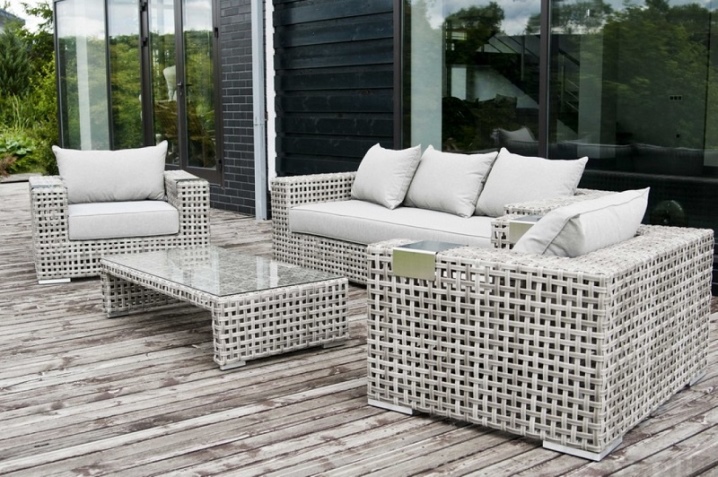
What is it and what is it made of?
Natural rattan is plant material... In fact, these are peeled and dried stems of a palm tree that grows in Indonesia and southeast Malaysia. Along with natural rattan, you can buy furniture made of artificial material in stores. It is of high quality, exceptional durability and environmental friendliness. It comes out of production under different names - synthetic rattan, polirotan and even technoratan. This innovative material was developed by German chemists at the end of the last century and literally immediately became a trend.
Rattan furniture is highly popular with users and attracts designers from all over the world.
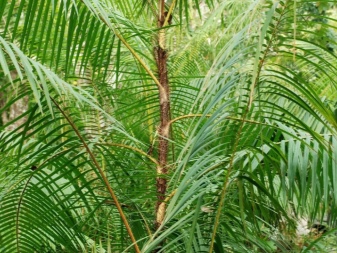
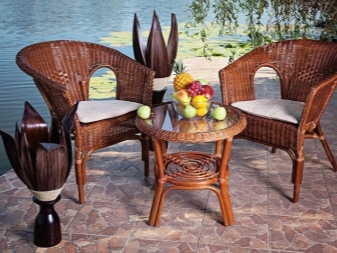
The raw material for producing artificial rattan is polyethylene granules. They are loaded into specialized equipment - an extruder. In it, the material heats up, under the influence of heat it becomes more pliable and viscous. The melted raw material is passed through a hole of a certain size.
After such processing, Technoratan visually resembles a cord or plastic tape. To increase the strength, the material is reinforced with nylon or silk threads. Synthetic rattan can be of different colors, thanks to which it harmoniously fits into any suburban interior. Sold in bays of 500 meters, each about 5 kg. Less often it comes cut into pieces.
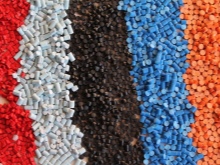

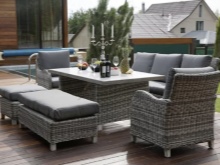
Comparison with natural material
Artificial rattan looks like the photo. Its differences from the classic woody one are almost invisible.
But the functional characteristics of the technorattan are higher. This material is more durable: if real rattan lasts 20-25 years, then artificial furniture will serve for at least 5 decades.
Synthetic rattan retains its shape when exposed to cold temperatures and direct sunlight. He is not afraid of dirt, he can withstand high mechanical stress. This is what makes polymer rattan furniture popular among summer residents, gardeners and owners of suburban homes.
Artificial rattan will be the best solution for pet owners and families with small children. Natural material will not last long in extreme operating conditions.
Buying such furniture will be economically impractical: you constantly have to repair it or completely change it.
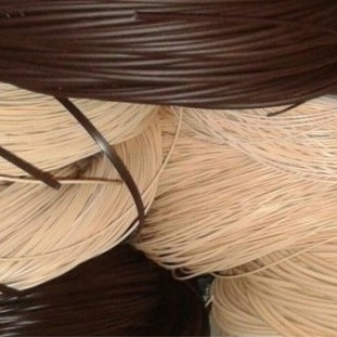

Polyrotanga is also preferable for those people who, due to their employment, are not able to provide constant monitoring and care of wicker furniture.... If a strong wind rises, it rains or the scorching sun comes out, then the condition of natural rattan will immediately deteriorate. Such furniture should not be left in the cold in winter in an unheated dacha, but technorattan is resistant to any adverse weather conditions.
Finally, products made of natural rattan will have to be varnished and impregnated annually to prevent the appearance of mold or the attack of insects... And it can only be cleaned with a dry cloth without cleaning agents or with a vacuum cleaner with a special brush. Artificial rattan is more profitable, this furniture can stand anywhere.
In addition, it does not require special care - it was installed and forgotten.

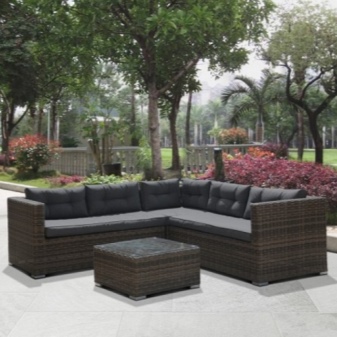
Main characteristics
Like any other material, technoratang has its advantages and disadvantages.
Let's first highlight the pros.
-
High moisture resistance... Even if you leave the braid outside for the autumn-winter period, its appearance will not change at all.
-
Resistant to temperature surges. Synthetic rattan furniture can be stored anywhere (on the veranda of the house, near heating radiators and even in a bathhouse).
-
Resistant to UV rays. Polirotang does not fade in direct sunlight.
-
Stable frame. In the manufacture of furniture from technorattan, bulky frames made of aluminum or wood are used. This distinguishes it from natural raw materials.
-
Ability to withstand heavy weight loads. Technorattan furniture is very durable. You can jump on it, take a running seat and even dance.
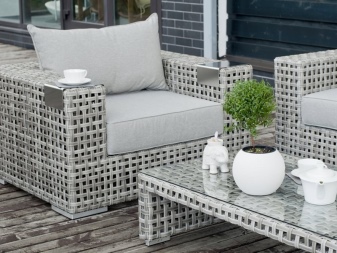
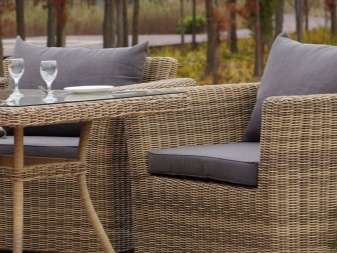
But the material also has its drawbacks.
-
This is not a natural material. Nevertheless, in its production, environmentally friendly polymer components are used, which, even with significant heating, do not emit volatile toxic substances and a chemical odor.
-
Large mass... Thanks to the massive frame, the furniture made of polyrotanga is quite heavy. However, this is not a problem, since you do not have to constantly move it to protect it from the sun and rain.
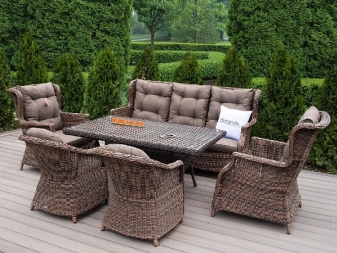
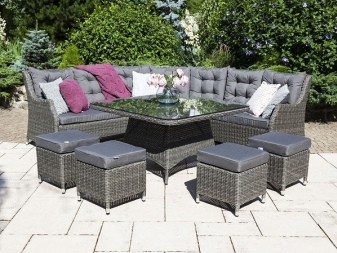
Species overview
Synthetic rattan comes in four basic varieties. Let's dwell on them in more detail.
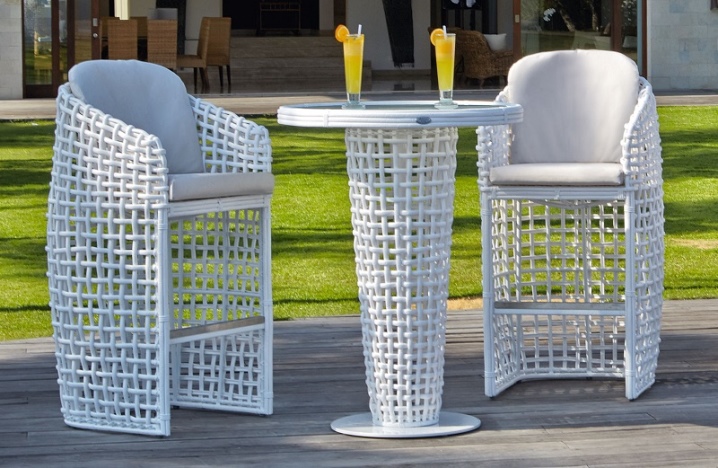
Crescent
It is a 6-12mm thick rattan with rounded ends. If you look at the cross-sectional shape of such a rattan, it will resemble a semicircle. This allows you to create a volumetric effect. Therefore, the finished furniture visually looks larger, although very little material is often spent.
However, the weight of this rattan is greater than that of strip designs. This is especially noticeable when threads of 9 mm or more are selected for weaving. The thicker the threads are, the heavier the product will be at the exit.
Therefore, if you need wide material, it is better to give preference to the strip.
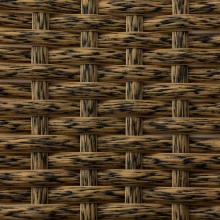
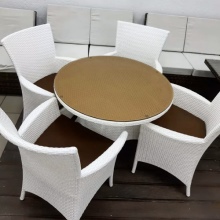
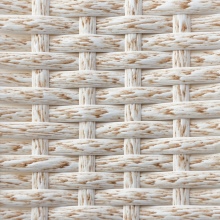
Rod
Rattan in the form of a rod is a round fiber on a cut. The polymer can be hard or plastic. It goes on sale in rolls in different diameters. The most common sizes are 2.1, 2.2, 2.7, 3.0 and 4.0 mm.
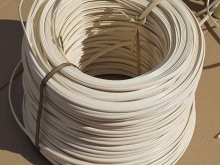
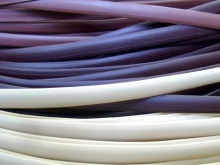
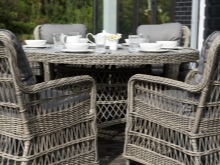
Simulated bark
These polyethylene fibers have a semicircular profiled shape. They can contain additional profiles - oval or flat semicircular. The most popular sizes are 4.0, 5.0, 6.0, 7.0, 8.0, 12.0 mm.
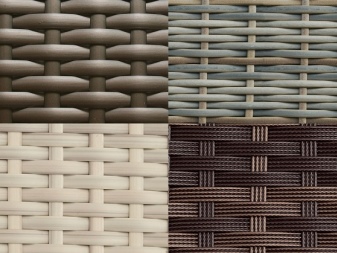
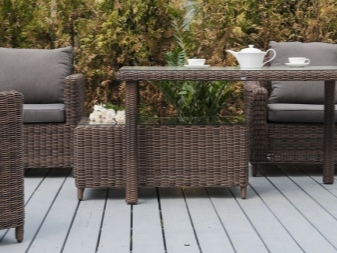
Stripes with and without texture
The most popular are rattan strips, it is this modification that is used most often by furniture manufacturers. The advantages of the strip include light weight, so it is very easy to work with it.
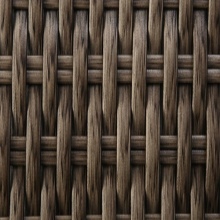

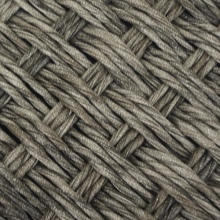
Applications
The exceptional qualities of Technorattan make it a popular material for garden furniture.... Sofas, chairs and rocking chairs for the lounge area are woven from it. To date, the assortment of polymer rattan products includes a large set of items - ottomans, chests, flowerpots, drawers, cabinets, benches, shelves, bar counters, as well as coffee and dining sets. Gazebos are erected from this material, fences are built.
Screens made of this material do not interfere with natural air exchange. Therefore, they are often used to mask heating devices. The material is in demand when creating blocks for storing cereals and pasta in kitchen cabinets.
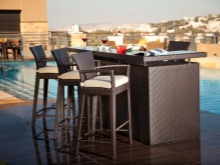
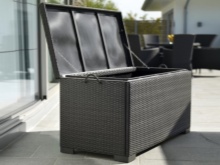
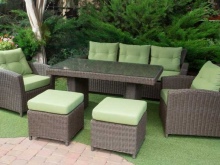
Interesting Facts
Rattan furniture has been popular since ancient times.
In Europe, wicker chairs adorned the possessions of the French king Louis-Philippe.
In America, George Washington was a rattan fan.
Archaeologists have found rattan chairs even in the tomb of Tutankhamun.


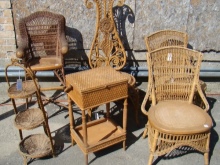













The comment was sent successfully.